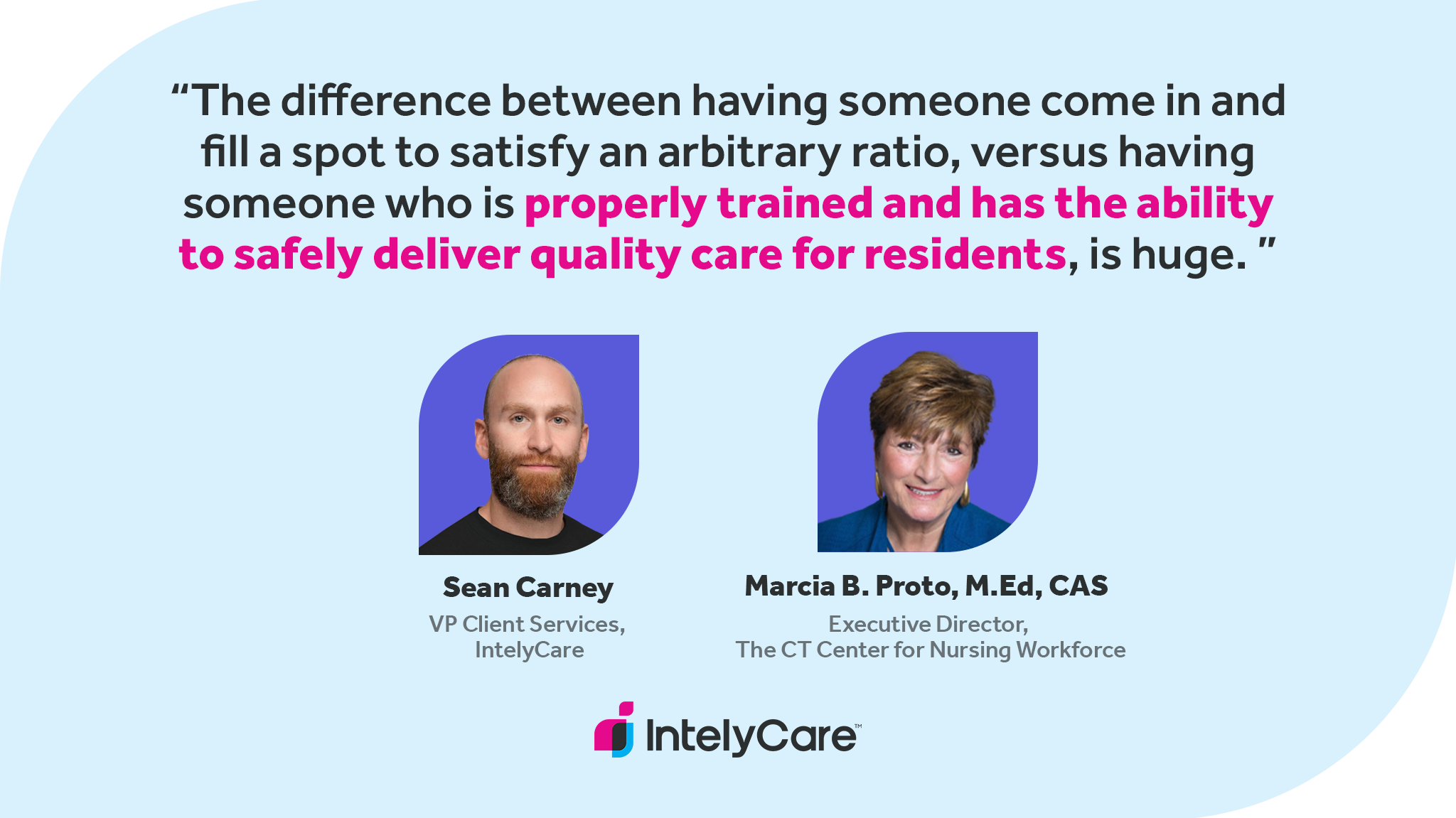News surrounding the proposed federal staffing mandate and rate caps has been dominating long-term care headlines these days. But what does this new legislation actually mean for your facility? In a recent webinar, Sean Carney, VP of Client Services at IntelyCare, and Marcia Proto, Executive Director at The Connecticut Center for Nursing Workforce, delved into the complex world of staffing mandates, rate caps, and their impact on long-term care facilities.
In this conversation, the two break down the impact that staffing minimums and rate caps may have on a facility’s workforce development, budgeting, and ability to provide quality, consistent care.
If you don’t have time to watch the full webinar, scroll down for a quick recap of some of the webinar highlights.
What Are Rate Caps?
Rate caps are regulations that are designed to level the hiring playing field in long-term care, setting a limit on charges that agencies can impose on health care facilities. These caps are tied to regional wage structures and aim to control costs, ensure fair compensation, and increase transparency in healthcare staffing.
What States Have Rate Caps?
Rate caps are being introduced in legislation in various states, yet only Rhode Island and Massachusetts have enacted them. Massachusetts went through a process where the rules and regulations were developed after a cap was proposed, resulting in some flexibility in handling issues like overtime, holiday pay, and emergency coverage. In contrast, Rhode Island initiated a rate cap with fewer defined regulations, requiring ongoing collaboration between stakeholders to find workable solutions.
What Are Some of the Challenges with the Proposed Staffing Ratios?
CMS has proposed a mandate requiring nursing homes to provide a minimum of 3.0 hours per patient day of direct care. 0.55 hours of that care must be provided by a registered nurse and 2.45 hours by a nurse aide. One of the big concerns with a mandate is the competency of the nursing staff. Marcia highlighted the need to assess the human capital required to meet these legislative requirements, especially in settings that demand 24/7 care. It’s essential to consider not only the number of staff but also their competencies and training.
What Roles Does Funding Play?
Funding plays a pivotal role in workforce development, especially when implementing new legislation. The question arises: How do states ensure there is enough funding to support these new regulations? Without adequate funding and training programs, the long-term care sector faces an even greater workforce crisis.
What About Continuing Education?
Long-term care facilities can benefit from partnerships with nursing education providers. Many schools and nursing programs are open to collaborating with facilities to provide clinical experiences for students. These partnerships can help students gain exposure to long-term care settings and potentially choose careers in this field. Building these relationships can be mutually beneficial, as facilities can showcase their organizations to future nursing professionals.
Looking for a Trusted Partner?
You can count on IntelyCare to be a partner to you, to treat our nurses and aides well, and to help you provide outstanding patient care. Talk to us today to learn how we can help you safely supplement your workforce.
